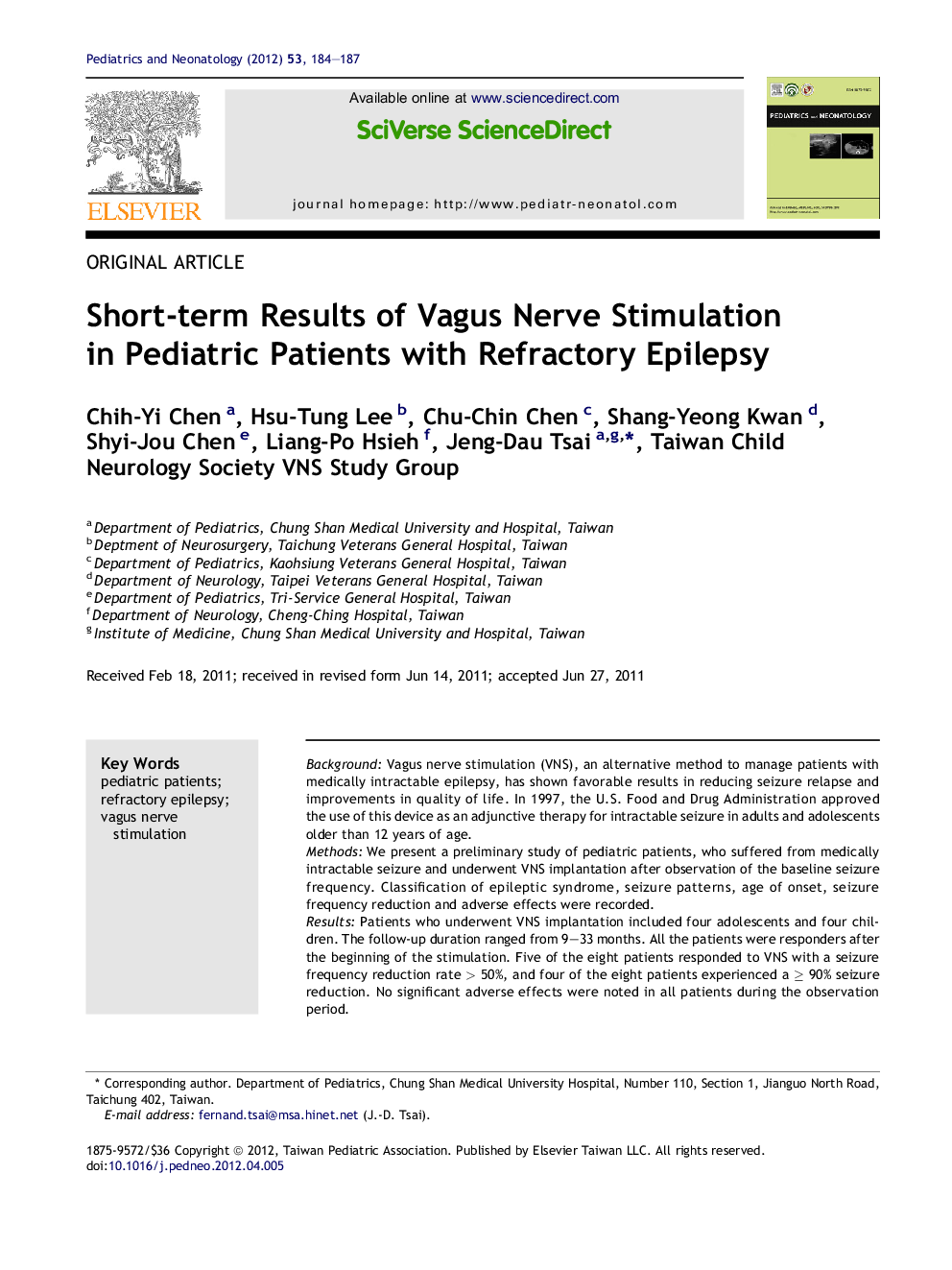| Article ID | Journal | Published Year | Pages | File Type |
|---|---|---|---|---|
| 4175289 | Pediatrics & Neonatology | 2012 | 4 Pages |
BackgroundVagus nerve stimulation (VNS), an alternative method to manage patients with medically intractable epilepsy, has shown favorable results in reducing seizure relapse and improvements in quality of life. In 1997, the U.S. Food and Drug Administration approved the use of this device as an adjunctive therapy for intractable seizure in adults and adolescents older than 12 years of age.MethodsWe present a preliminary study of pediatric patients, who suffered from medically intractable seizure and underwent VNS implantation after observation of the baseline seizure frequency. Classification of epileptic syndrome, seizure patterns, age of onset, seizure frequency reduction and adverse effects were recorded.ResultsPatients who underwent VNS implantation included four adolescents and four children. The follow-up duration ranged from 9–33 months. All the patients were responders after the beginning of the stimulation. Five of the eight patients responded to VNS with a seizure frequency reduction rate > 50%, and four of the eight patients experienced a ≥ 90% seizure reduction. No significant adverse effects were noted in all patients during the observation period.ConclusionThe effective management of medically intractable seizure remains challenging to most clinical physicians. In addition to ketogenic diet and epilepsy surgery, VNS provides an alternative way to manage this issue. Our results suggest that VNS is well tolerated in pediatric patients, and is a favorable and safe method of treating intractable seizure in common clinical practice.
